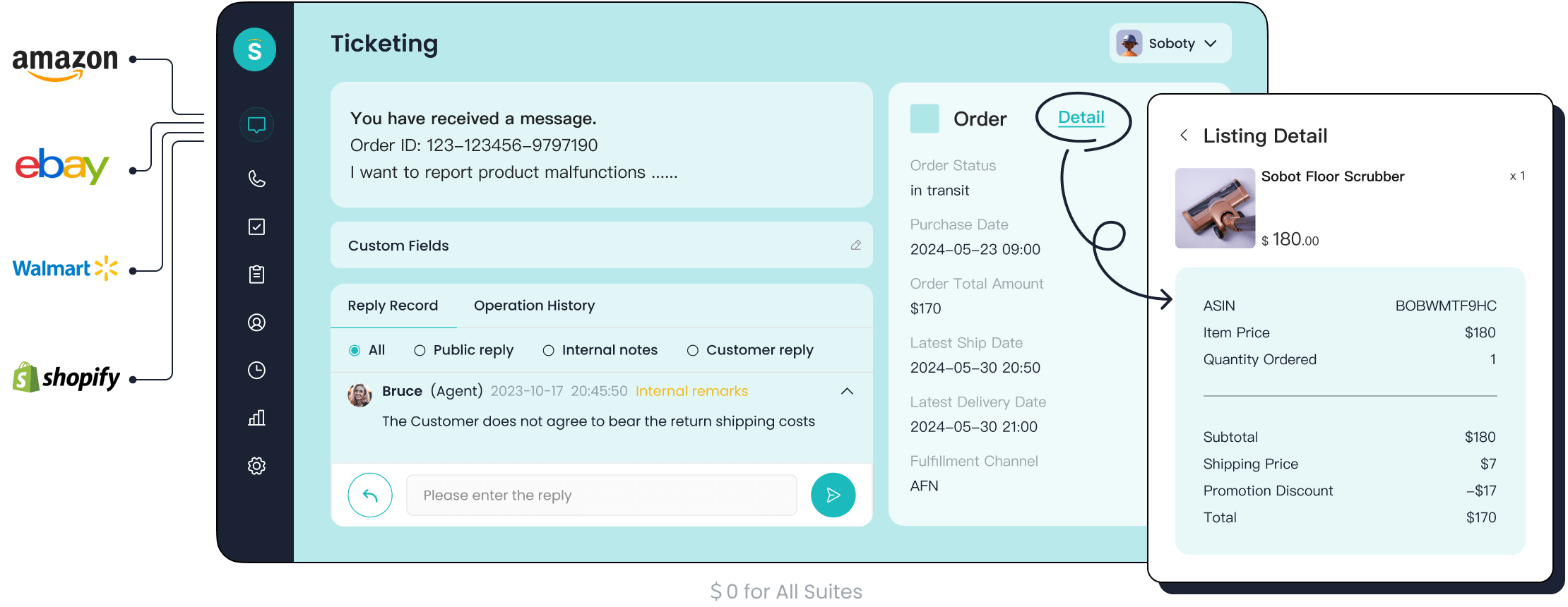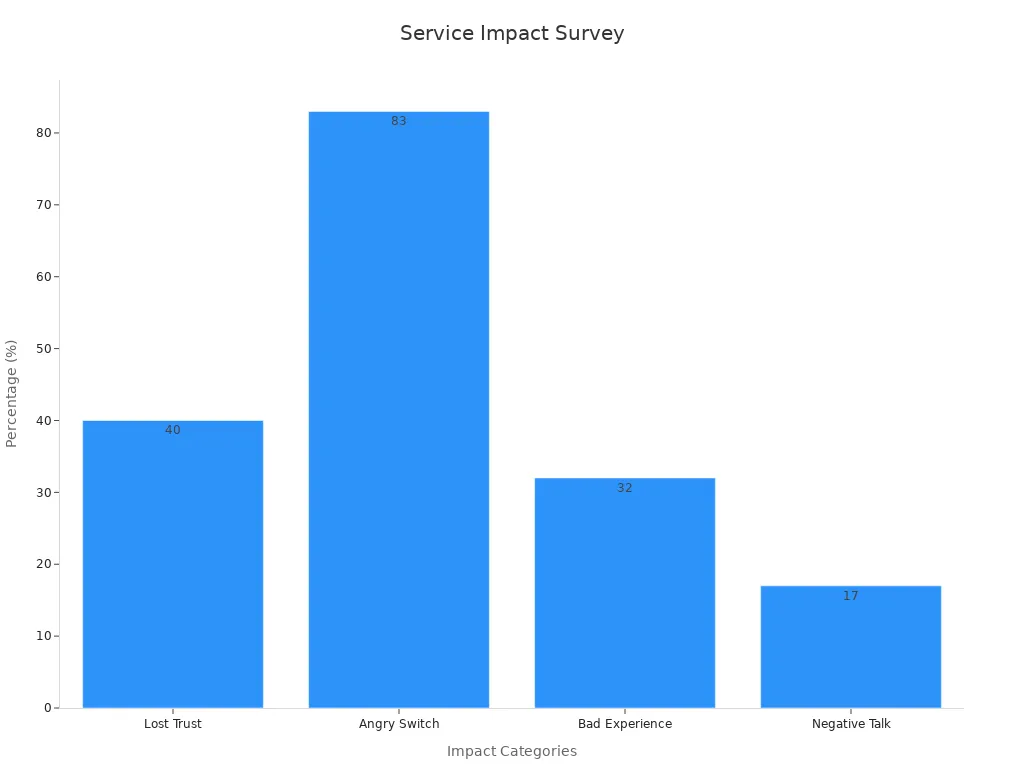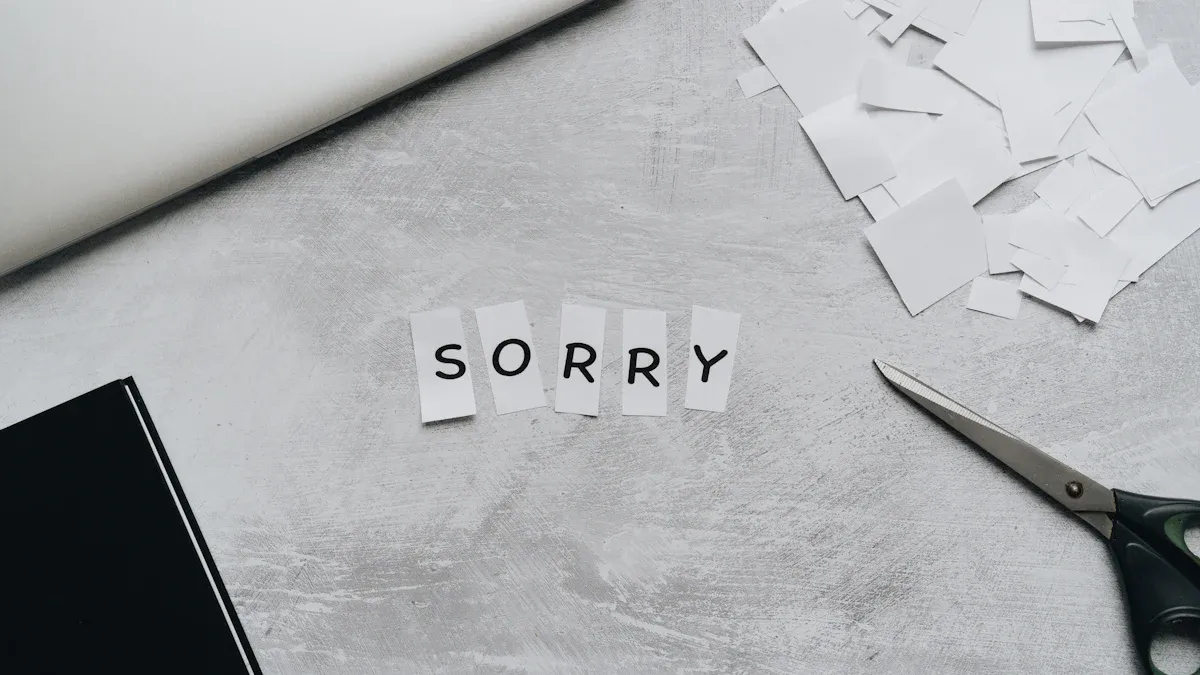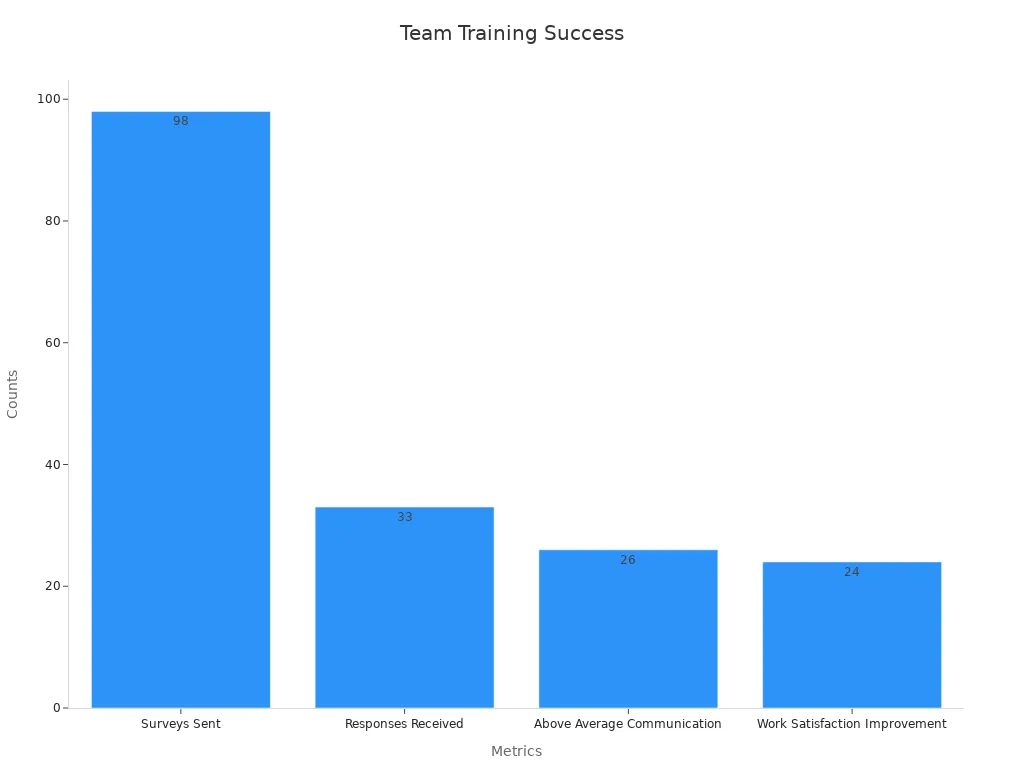A Guide to Writing a Professional Apology Letter to Clients

Maintaining strong client relationships requires timely and thoughtful responses when issues arise. A well-crafted letter of apology to a client for poor service can mend trust and encourage loyalty. Studies reveal that 68% of dissatisfied customers won’t return unless addressed with a professional apology. Tools like Sobot's Ticketing System streamline communication, ensuring your effective apology letter reaches clients promptly.
Understanding the Importance of a Letter of Apology to a Client for Poor Service

Impact of Poor Service on Client Trust and Loyalty
Poor service can severely damage client trust and loyalty, often leading to long-term consequences for your business. Studies show that over 40% of consumers who lose trust in a brand switch to competitors, while 83% of dissatisfied clients leave after a negative customer support experience. Even a single bad interaction can prompt 32% of customers to abandon a brand entirely. Additionally, 17% of unhappy customers share their negative experiences publicly, amplifying the damage to your reputation.
| Statistic | Impact |
|---|---|
| Over 40% of consumers who lost trust in a brand stopped using it and switched to competitors. | Indicates significant customer churn due to trust issues. |
| 83% of angry clients will switch brands after a negative customer support experience. | Highlights the direct correlation between poor service and brand loyalty loss. |
| 32% of customers will leave a brand after just one bad experience. | Shows the immediate impact of a single negative interaction on customer retention. |
| 17% of dissatisfied customers will discuss their negative experience to raise awareness. | Suggests that poor service can lead to negative word-of-mouth, further damaging brand reputation. |
A well-crafted letter of apology to a client for poor service can mitigate these risks by addressing concerns directly and restoring trust.
Turning Negative Experiences into Opportunities
Negative experiences, while challenging, can serve as valuable opportunities for growth and improvement. Companies like Domino’s Pizza and Marriott International have transformed criticism into success stories. Domino’s, for instance, responded to feedback about food quality by launching workshops to improve processes, resulting in a 10% sales increase within a year. Similarly, Marriott reduced negative reviews by 25% through initiatives focused on empathy and connection.
| Organization | Negative Experience | Transformation Approach | Outcome |
|---|---|---|---|
| Domino's Pizza | Negative feedback on food quality and delivery times | Implemented 'Pizza Turnaround' workshops to engage employees in improving processes | 10% increase in sales over the following year |
| Marriott International | Complaints about front desk interactions | Launched '#LoveTravels' initiative focusing on empathy and connection | 25% reduction in negative reviews in the first six months |
By addressing client concerns with sincerity and actionable solutions, you can turn dissatisfaction into loyalty. A letter of apology to a client for poor service plays a pivotal role in this transformation, demonstrating your commitment to improvement.

Role of Sobot's Ticketing System in Managing Client Communication
Effective communication is essential for service recovery, and Sobot's Ticketing System simplifies this process. The system automates ticket creation and routing, ensuring that client concerns reach the right agents promptly. With features like SLA management and multilingual support, you can respond to complaints efficiently and accurately. Businesses using Sobot's Ticketing System have reported a 30% increase in agent efficiency and a 97% customer satisfaction score.
| Metric | Value |
|---|---|
| Increase in agent efficiency | 30% |
| Customer satisfaction score | 97% |
The system’s unified platform consolidates communication channels, enabling you to craft personalized apology letters that resonate with clients. By leveraging Sobot’s tools, you can rebuild trust and foster stronger relationships, even after poor service incidents.

Key Elements of a Customer Apology Letter
Acknowledge the Issue Clearly
Acknowledging the issue upfront demonstrates respect for your client’s concerns and sets the tone for a constructive resolution. Clearly stating the problem shows that you understand their frustration and are committed to addressing it. For example, if a customer complaint arises due to delayed delivery, you might begin with, “We understand that the delay in delivering your order has caused inconvenience, and we sincerely apologize for this oversight.”
Research supports the importance of acknowledgment. Dr. Ingrid Carlier’s meta-analysis found that progress monitoring improved recovery outcomes in 65% of cases, emphasizing the value of identifying and addressing issues early. In customer service, this translates to faster resolution and improved client satisfaction. Using tools like Sobot’s Ticketing System can help you track and document customer complaints effectively, ensuring no issue goes unnoticed.
| Evidence Type | Findings | Implications |
|---|---|---|
| Meta-analysis | Progress monitoring sped up recovery 65% of the time. | Early acknowledgment leads to faster resolution and improved satisfaction. |
| Measurement-Based Care | Real-time data identifies issues early. | Timely adjustments improve outcomes and rebuild trust. |
| Patient Engagement | Regular feedback increases involvement in the recovery process. | Higher engagement fosters better commitment and loyalty. |
Take Responsibility Without Excuses
Taking responsibility is a cornerstone of any effective apology letter. Avoid deflecting blame or making excuses, as this can further frustrate your client. Instead, own the mistake and reassure them of your commitment to resolving the issue. For instance, you could say, “We take full responsibility for the error in processing your order and are working to ensure it doesn’t happen again.”
Industry data highlights the impact of taking responsibility on trust restoration. Between 2018 and 2021, trust in businesses increased from 43-53% to 61% when companies demonstrated competence, fairness, and accountability. By using Sobot’s Ticketing System, you can streamline communication and ensure that every customer complaint is addressed with transparency and professionalism.
| Year | Trust in Business (%) |
|---|---|
| 2018 | 43 - 53 |
| 2021 | 61 |
- Competence: Delivering quality products and services builds trust.
- Motive: Clients value understanding a company’s intentions.
- Means: Fair practices enhance credibility.
- Impact: Positive actions strengthen relationships.
Express Genuine Regret
A genuine apology goes beyond words; it conveys empathy and sincerity. Expressing regret shows that you value your client’s experience and are committed to making things right. For example, you might write, “We deeply regret the inconvenience caused by the delay in resolving your issue. Your satisfaction is our top priority.”
Studies validate the effectiveness of genuine regret in improving client satisfaction. Research by Zeelenberg (1999) found that regret often leads to corrective actions, while Morris & Moore (2000) demonstrated that it drives performance improvement. By expressing regret and taking action, you can turn a bad service experience into an opportunity to strengthen client loyalty.
| Evidence Description | Source | Findings |
|---|---|---|
| Regret and corrective action | Zeelenberg, 1999 | Regret predicts switching to new providers after negative experiences. |
| Performance improvement | Morris & Moore, 2000 | Regret initiates corrective action when perceived as possible and effective. |
Offer a Solution or Compensation
Providing a solution or compensation demonstrates your commitment to resolving the issue and restoring trust. Whether it’s a refund, replacement, or a discount on future services, offering tangible remedies shows that you value your client’s business. For example, you could say, “To address the inconvenience caused, we are offering a 20% discount on your next purchase.”
Best practices suggest including options for feedback to ensure the solution meets the client’s expectations. Sobot’s Ticketing System can help you track resolutions and follow up with clients to confirm their satisfaction. This proactive approach not only resolves the immediate issue but also strengthens long-term relationships.
- Take Responsibility: Acknowledge the mistake sincerely.
- Explain Clearly: Provide a transparent explanation of what went wrong.
- Offer Solutions: Present a dedicated resolution to the problem.
- Ask for Feedback: Show that you care about the client’s feelings and satisfaction.
Outline Preventive Measures to Avoid Recurrence
Clients appreciate knowing that steps are being taken to prevent future issues. Outlining preventive measures demonstrates accountability and a commitment to continuous improvement. For instance, you might write, “We have implemented additional quality checks to ensure this issue does not occur again.”
Transparency about corrective actions builds trust. Keeping clients informed about changes, encouraging feedback, and sharing positive results can reinforce confidence in your organization. Sobot’s Ticketing System supports this process by providing analytics and tracking preventive measures, ensuring that your team learns from every customer complaint.
- Inform clients about corrective actions and preventive measures.
- Encourage feedback to demonstrate commitment to improvement.
- Share testimonials and positive results to rebuild trust.
- Conduct thorough investigations and apply corrective measures to show integrity.
Step-by-Step Guide to Writing a Customer Apology Email
Start with a Sincere and Professional Opening
The opening of your customer apology email sets the tone for the entire message. A professional yet heartfelt introduction ensures your apology is received positively. Begin by acknowledging the issue and expressing regret. For example, you might write, "We sincerely apologize for the inconvenience caused by the delay in processing your order." This approach demonstrates accountability and empathy right from the start.
Industry experts recommend several key steps for crafting an effective opening:
- Start on a positive note to establish a professional tone.
- Clearly state your apology to show sincerity.
- Take responsibility for the mistake to avoid misunderstandings.
- Include a brief mention of your plan to prevent similar issues in the future.
Using tools like Sobot's Ticketing System can help you track customer complaints and ensure your apology addresses the specific issue accurately. This system consolidates communication channels, allowing you to craft personalized and professional responses efficiently.
Address the Client Personally
Personalization is a powerful way to nurture trust and show clients that you value their business. Addressing the client by name and referencing their specific concern demonstrates that you’ve taken the time to understand their situation. For instance, instead of starting with "Dear Customer," use "Dear Mr. Johnson" or "Dear Sarah."
Customers expect personalized care, especially during service recovery. They don’t want to repeat their issues across multiple touchpoints. A ziplining company, for example, improved customer satisfaction by having managers personally call clients after equipment issues. They offered priority rebooking and discounts, which strengthened relationships and encouraged repeat visits.
Sobot's Ticketing System simplifies personalization by providing a unified view of customer data. With features like "One Customer ID," agents can access all relevant information about a client, ensuring every apology email feels tailored and genuine.
Use Empathetic and Clear Language
Empathy is essential when you apologize to customers. It helps you connect on a human level and validate their feelings. Use clear and straightforward language to explain what went wrong and how you plan to fix it. For example, you could write, "We understand how frustrating it must have been to experience a delay in receiving your order. We deeply regret this oversight and are taking steps to ensure it doesn’t happen again."
Research highlights the importance of empathetic communication in rebuilding trust. Empathy shows clients that you care about their experience, while clear communication reassures them that you’re taking corrective action. Authenticity and transparency further strengthen this trust, as clients value honesty in service recovery.
Sobot's Ticketing System supports this approach by enabling agents to track and resolve issues efficiently. Its multilingual support ensures that clients receive clear and empathetic communication in their preferred language, enhancing satisfaction and loyalty.
End with a Commitment to Improvement and Follow-Up
Conclude your apology email by outlining the steps you’ll take to prevent similar issues in the future. This demonstrates accountability and reassures the client that their feedback has led to meaningful changes. For example, you might write, "We have implemented additional quality checks to ensure timely deliveries moving forward. We will also follow up with you next week to confirm your satisfaction with our resolution."
Encouraging clients to provide additional feedback further strengthens the relationship. It shows that you value their input and are committed to continuous improvement. Studies reveal that sharing a clear plan for corrective actions fosters trust and reassures clients of your dedication to service excellence.
Sobot's Ticketing System makes follow-ups seamless by automating reminders and tracking resolutions. Its analytics tools provide insights into recurring issues, helping your team implement preventive measures effectively. By leveraging these features, you can explain what you’ll do differently and nurture trust with your clients.
Common Mistakes to Avoid in a Customer Apology Letter
Avoiding Blame or Making Excuses
Shifting blame or making excuses can worsen a client’s frustration. Instead of deflecting responsibility, focus on empathy and acknowledgment. For example, saying, “We’re sorry to hear about your experience,” shows concern without assigning fault. Companies like Wells Fargo learned this the hard way. By blaming low-level employees for systemic issues, they damaged their reputation and lost client trust. In contrast, Starbucks demonstrated the importance of accountability when its CEO issued a direct apology after a racially-biased incident, outlining corrective actions to realign with company values.
Using tools like Sobot’s Ticketing System can help you track complaints and ensure your responses remain empathetic and professional. The system’s unified platform allows agents to address issues promptly, reducing the risk of miscommunication that could lead to bad customer service.
Using Generic or Insincere Language
Generic apologies often feel robotic and insincere. Personalization is key to making your apology resonate. Address the client by name and reference their specific issue. For instance, instead of saying, “We apologize for the inconvenience,” try, “We regret that your order of [specific product] wasn’t delivered on time.” This approach shows that you value their experience.
Sobot’s Ticketing System simplifies personalization by consolidating customer data into a single view. Features like “One Customer ID” ensure that every apology feels tailored, helping you avoid the pitfalls of poor customer service.
Failing to Offer a Resolution or Compensation
An apology without a solution often feels hollow. Clients want to see that you’re taking steps to resolve their issue. Whether it’s a refund, replacement, or discount, offering tangible remedies demonstrates your commitment to making things right. For example, you could say, “To address the inconvenience, we’re offering a 15% discount on your next purchase.”
Sobot’s Ticketing System helps you track resolutions and follow up with clients to confirm their satisfaction. This proactive approach not only resolves immediate concerns but also strengthens long-term relationships.
Delaying the Apology and Follow-Up
Timing is critical in service recovery. Delayed apologies can escalate a client’s frustration and lead to negative outcomes. Yahoo’s failure to promptly disclose a data breach resulted in a significant loss of trust and valuation. On the other hand, addressing issues quickly can turn a bad customer service experience into an opportunity for loyalty.
Sobot’s Ticketing System automates reminders and tracks follow-ups, ensuring no client concern goes unresolved. Its analytics tools provide insights into recurring issues, helping your team implement preventive measures effectively. By acting swiftly, you can rebuild trust and demonstrate your commitment to improvement.
Practical Examples and Apology Letter Templates

Template for Apology for Late Delivery
Late deliveries can frustrate customers and damage trust. A well-crafted apology letter can help repair the relationship. Here’s an example:
- Subject: We Apologize for the Delivery Delay
- Dear [Customer Name],
- We sincerely apologize for the delay in delivering your [product/service].
- The delay occurred due to [brief explanation, e.g., unforeseen supply chain issues].
- To make up for the inconvenience, we are offering [compensation, e.g., a 10% discount on your next purchase].
- We value your business and are committed to providing excellent service.
Simple subject lines like "We’re sorry" or "Our apologies" effectively convey the message. Acknowledging the mistake and offering compensation demonstrates accountability. Using Sobot’s Ticketing System, you can automate follow-ups and ensure timely responses, enhancing customer satisfaction.
Template for Apology for Poor Customer Support
When customer service falls short, a prompt and personalized apology can restore confidence. Consider this template:
- Subject: Our Apologies for the Recent Experience
- Dear [Customer Name],
- We regret that your recent interaction with our support team did not meet your expectations.
- We take full responsibility for the oversight and are taking steps to improve our processes.
- To address your concerns, we are [offering compensation, e.g., a refund or priority support].
- Your feedback is invaluable, and we are committed to ensuring a better experience moving forward.
Timely responses, ideally within 12 hours, can help regain loyalty. Sobot’s Ticketing System enables you to track complaints and personalize responses, ensuring no issue goes unresolved.
Template for Apology for Product or Service Defects
Defective products or services can lead to dissatisfaction. A sincere apology paired with corrective actions can rebuild trust. Here’s an example:
- Subject: We Apologize for the Defect in Your [Product/Service]
- Dear [Customer Name],
- We are deeply sorry for the defect in your [product/service].
- This issue occurred due to [brief explanation, e.g., a manufacturing error].
- We are offering [compensation, e.g., a replacement or refund] to resolve the matter.
- Additionally, we have implemented [preventive measures] to avoid similar issues in the future.
Acknowledging the mistake and explaining corrective actions demonstrates your commitment to improvement. Sobot’s Ticketing System helps track recurring issues, ensuring your team learns from every complaint.
How Sobot's Ticketing System Can Help Personalize Apology Letters
Sobot’s Ticketing System simplifies the process of crafting personalized apology letters. Its unified platform consolidates customer data, allowing you to address clients by name and reference specific issues. Features like "One Customer ID" ensure every interaction feels tailored. Multilingual support enables you to communicate effectively with a global audience.
For example, if a client reports a late delivery, the system automatically routes the ticket to the appropriate agent. Pre-written templates and canned responses save time while maintaining professionalism. Analytics tools provide insights into recurring problems, helping you implement preventive measures. By leveraging Sobot’s Ticketing System, you can enhance your customer service and strengthen client relationships.
Tips for Ensuring Your Apology is Well-Received
Follow Up with the Client to Reinforce Commitment
Following up with clients after an apology demonstrates your dedication to resolving their concerns. It reassures them that their feedback matters and that you are committed to improvement. For example, sending a follow-up email or scheduling a quick call to confirm their satisfaction can leave a lasting positive impression.
Research highlights the importance of follow-ups in service recovery. Metrics like response speed and compensation significantly impact customer loyalty and satisfaction:
| Performance Metric | Impact on Service Recovery Outcomes |
|---|---|
| Response Speed | Enhances customer satisfaction and loyalty |
| Compensation | Increases willingness to maintain customer loyalty |
| Relationship Quality | Important for sustaining positive customer relationships |
Sobot's Ticketing System simplifies follow-ups by automating reminders and tracking resolutions. Its analytics tools help you monitor client satisfaction, ensuring no concern goes unresolved. By leveraging these features, you can strengthen relationships and foster trust.
Monitor Client Feedback Using Sobot's Ticketing System
Monitoring client feedback is essential for understanding their needs and improving your services. Tools like Sobot's Ticketing System provide real-time sentiment analysis and predictive analytics, enabling you to adapt responses based on customer mood and anticipate future behavior.
| Tool | Benefit | Impact on Client Feedback Monitoring |
|---|---|---|
| Predictive Analytics | Anticipates customer behavior with accuracy, enhancing satisfaction. | Improves customer satisfaction and loyalty through proactive engagement. |
| Real-time Sentiment Analysis | Adapts responses based on customer mood, ensuring effective interactions. | Enhances the quality of responses to client feedback. |
| Automated Ticketing Systems | Reduces processing times and operational costs. | Increases efficiency in handling client feedback. |
Deloitte’s case study revealed that AI-driven automation reduced processing times by 60%, while Gartner predicts hyper-automation technologies could cut costs by 30% by 2024. These insights underscore the value of using advanced tools like Sobot's Ticketing System to streamline feedback management and improve client relationships.
Train Your Team on Effective Apologies and Communication
Your team plays a critical role in ensuring apologies are well-received. Training them on effective communication techniques can significantly enhance client satisfaction. Methods like the HEARD Method (Listen, Empathize, Apologize, Resolve, Diagnose) and PEARLS (Partnership, Empathy, Apology, Respect, Legitimization, Support) provide structured approaches for handling client concerns.
A recent survey showed that 78.8% of respondents rated above-average communication as a key factor in improving work satisfaction, while 72.7% reported enhanced job performance after training.

Sobot supports team training by offering tools that simplify communication workflows. Features like canned responses and multilingual support ensure your team can deliver consistent, empathetic, and professional apologies across all channels. Investing in training not only improves client relationships but also boosts team morale and efficiency.
A professional apology rebuilds trust and strengthens loyalty. The importance of apology emails lies in their ability to address client concerns effectively. Sobot's Ticketing System simplifies this process by automating responses and tracking resolutions. Use mistakes as opportunities to improve, ensuring every interaction fosters stronger client relationships.
FAQ
What is the ideal length for an apology email?
Keep your apology email concise, ideally between 150-200 words. Focus on acknowledging the issue, expressing regret, and offering a resolution. Avoid unnecessary details that dilute the message.
How soon should you respond to a client’s complaint?
Respond to a client’s complaint within 24 hours. Prompt responses demonstrate professionalism and commitment to resolving issues, which helps rebuild trust and maintain strong client relationships.
Can Sobot’s Ticketing System help with crafting apology emails?
Yes, Sobot’s Ticketing System simplifies the process. It consolidates client data, automates ticket routing, and provides templates, ensuring your apology email is personalized and professional.
See Also
Essential Insights on Quality Assurance Tools for Call Centers
Comprehensive Overview of Quality Management Systems in Call Centers
Ten Essential Tips for Selecting Social Media Support Tools
Best Free Chat Solutions for Businesses Analyzed and Compared
Strategies for Effectively Overseeing Live Chat Support Teams
